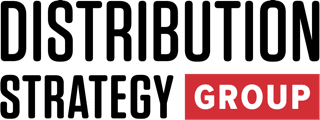Every distribution executive faces the same tempting trap: when growth opportunities emerge, the instinct is to scale fast—add more warehouse space, hire additional staff, expand product lines, or chase new markets. But here’s the uncomfortable truth that separates thriving distributors from those merely surviving—scaling broken processes only amplifies your problems at greater cost.
The distributors pulling ahead aren’t necessarily the fastest to expand. They’re the ones who optimize first, then scale systematically. This approach isn’t just good business philosophy, it’s becoming a competitive necessity in 2025, especially as artificial intelligence transforms what optimization can achieve.
The Hidden Cost of Premature Scaling
The math is unforgiving. When you scale inefficient operations, you don’t just multiply revenue, you multiply waste, complexity, and hidden costs. A 5% inefficiency in your quote process becomes a 5% drain on every expanded territory. Poor inventory turnover ratios compound across every new product line. Suboptimal pricing strategies erode margins at exponentially higher volumes.
I learned this lesson the hard way early in my career. As a young manager, I was prone to wanting to add more resources to solve problems—more people, more equipment, more budget. It wasn’t until Grainger introduced continuous improvement principles, combined with working under a savvy leader, that I truly understood the importance of optimization before investment or introducing new technology. That shift in mindset fundamentally changed how I approached operational challenges and became the foundation for sustainable growth throughout my career.
Today, we have an added element: AI can absolutely help us solve problems in our business when used properly. This technology offers unprecedented power to transform operations, unlock hidden profits, and create competitive advantages that were impossible just a few years ago. But the fundamental principle remains unchanged—we need to optimize our processes before implementing technology. When you combine optimized processes with AI’s capabilities, that’s where the real magic happens. AI amplifies what you’re already doing, so starting with solid operational foundations ensures you’re amplifying excellence rather than inefficiency.
AI as the Strategic Optimization Engine
Artificial intelligence is no longer an experiment on the sidelines of distribution. It’s quickly becoming one of the most powerful levers for profitability and productivity. Yet with so many tools hitting the market, the challenge isn’t whether to adopt AI—it’s where to start.
The most successful distribution leaders apply a simple filter before investing in AI. It comes down to three questions:
- What is our biggest constraint? Every business has one. It might be order accuracy, warehouse throughput, staffing shortages, sales efficiency, or demand forecasting. Identify the constraint that’s holding growth back.
- Can AI realistically solve it today? Theoretical solutions are exciting, but ROI comes from practical improvements available now. AI is already delivering measurable gains in fulfillment, pricing, quoting, and forecasting. The key is to match today’s tools with today’s constraints.
- Are we pioneering for impact, or chasing novelty? Pioneering is valuable, it keeps you on the front edge of solutions. But experimentation without focus drains resources. The leaders who get AI right know when to say no to “cool” tools and yes to the ones that move the needle.
The Optimization-First Playbook
Leading distributors follow a clear sequence. They start by identifying their highest-impact optimization opportunities—typically found in pricing governance, cost-to-serve analytics, and process automation—then apply AI strategically to amplify results.
This isn’t about perfection before growth. It’s about building scalable foundations powered by intelligent technology that can handle increased volume, complexity, and market demands without breaking.
Distributors face increasing pressure: tighter margins, higher customer expectations, and a talent gap. AI offers leverage on all three—if applied strategically:
- In the warehouse: Computer vision reduces picking errors and improves throughput
- In sales: Automated quoting and pricing tools free reps to spend more time with customers
- In supply chain: Predictive analytics help reduce stockouts and excess inventory
This is AI not as a novelty, but as a profit multiplier that makes optimization scalable.
The Urgency of Strategic Action
Here’s why this is an urgent matter: the window for gaining first-mover advantage through optimization is narrowing. Early adopters are already pulling ahead, and the performance gaps are becoming more pronounced each quarter. The distributors who wait to optimize until after their next growth phase will find themselves competing against rivals who optimized first and are now scaling from a position of operational strength.
AI is not optional. But it’s also not one-size-fits-all. The distributors who thrive will be those who:
- Identify their biggest constraint
- Apply AI where it can deliver impact today
- Invest in pioneering efforts only when they align with clear business value
The question isn’t whether optimization should come before scaling—it’s whether you’ll be among the distributors who recognize this imperative and leverage AI strategically before your competitors do.
Your Strategic Framework
As you evaluate your optimization priorities, ask yourself:
- What’s the single biggest constraint in my business right now?
- Which AI tool could realistically solve that problem within 12 months?
- How can I turn AI from a buzzword into a profit driver that enables scalable growth?
The wholesale distribution industry is experiencing a fundamental shift toward technology-enabled operational excellence. The leaders emerging from this transformation will be those who master AI-powered optimization before they master expansion.
Learn more and secure your spot today.
As Chief Operations Officer of a Distribution Strategy Group, I'm in the unique position of having helped transform distribution companies and am now collaborating with AI vendors to understand their solutions. My background in industrial distribution operations, sales process management, and continuous improvement provides a different perspective on how distributors can leverage AI to transform margin and productivity challenges into competitive advantages.

